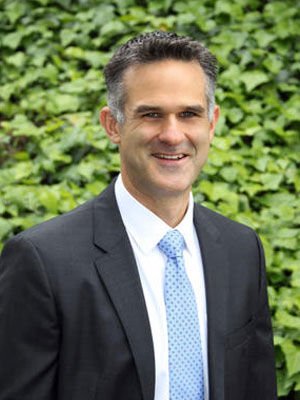Unexpected costs and shrinking enrollment driving cuts
Healdsburg Unified School District is going to make cuts in the coming months, and while Superintendent Chris Vanden Heuvel isn’t happy about it, he says they are being made to ensure the future financial health of the district in a rapidly changing environment.
The district has been deficit spending for a few years. Some of that Vanden Heuvel says, was by design. “In 2012-13 we gave raises for the first time since 2006 because the district had been in financial straits at that point and was under county watch,” he said. “We just needed to cleanup the district’s finances, so they weren’t able to give a raise for six years and in 2012-13 they gave teachers a raise and then there was another raise in 13-14.”
“I became superintendent in 2015 and when I came in, we had a large budget surplus of over 20 percent in terms of reserve. Board policy wants us to be around 13.33 percent, so we knew we had more than we wanted, which means we aren’t spending (that money) on current year’s kids or aren’t doing what we want for employees,” he continued. “What we did was three percent raises in consecutive years for employees. We knew we were going to deficit spend when we did those ‘three and threes’ because we wanted to spend that reserve down, so by definition we were going to spend more than we were taking in those few years.”
But, four unprecedented budgeting challenges would make that decision problematic. “What we didn’t anticipate was all the other factors that we don’t have control over that were going to come and start stretching us,” Vanden Heuvel said.
The first is the cost of special education, which has climbed from approximately $1.8 million to more than $2.5 million since 2015, while revenue provided by state and federal government for these services has fallen, from $1.4 million in 2015 to $1.1 million in 2018. Vanden Heuvel finds this the stickiest of wickets, because of the district’s commitment to doing right by special needs students.
“I want to preface this by saying nobody is questioning the services that students need in special education,” he said emphatically. “They absolutely need these services and we are happy to provide them for them. We want to meet their needs and make sure all of our students are successful. That said, special education has become very expensive for us. In the 60s and 70s when Congress passed (the legislation for special education) they mandated that districts provide a variety of services to students with special needs and they, at the time, said they would fund those services at least 40 percent. Well, they’ve never done that. Currently they are funding it at like six or seven percent. And the state doesn’t kick in additional dollars for that in any large scale.”
Contributing to skyrocketing costs is primarily the students who need care and assistance outside of district facilities, many of which are private and set their own costs, and which the district is obligated to pay for.
“The biggest stretch in this budget are students whose needs can’t be met locally in our schools,” he said. “So, we have 35 to 40 kids who are in special programs throughout the county and then we have a variety of students who go to what are called ‘non-public schools,’ which are private schools for students with special needs like autism or emotional disturbance and those costs are what have exorbitantly risen because it’s not us deciding on the cost, it’s not controlled by collective bargaining and there’s no control from the districts. We have to provide the services to the students, there’s a limited number of places that do it in Sonoma County, so we have to pay what they are charging. Again, the kids need it, but it’s straining our budget.”
The second factor is the cost of “Other Post Employment Benefits” or OPEBs. These are the healthcare and benefits costs negotiated by employees in the 1980s, which make the district responsible for the total cost of retired employee’s healthcare, even though they are retired and no longer work at the district. The annual cost of approximately $1.5 million is about 10 percent of the district’s annual compensations costs, according to Vanden Heuvel.
“Currently, this year, we are going to pay out $1.5 million to people who don’t work here anymore,” he said. “And again we don’t have any control over these costs because they are driven by the cost of healthcare and this year it jumped more than it had in the past. It’s tough to swallow when 10 percent of our compensation is going out to people that don’t work here, but it was bargained and we have to make good on the promises that were made.”
The third budget issue is pension costs for both certificated and classified employees. This issue has been a topic of discussion for awhile throughout schools districts and many other public entities, and at the moment, districts are being left to fund these increases entirely on their own, with no additional dollars from the state.
Finally, the fourth item hitting the district’s bottom line came as a nasty shock in December. Following the October firestorm, the county’s tax collecting agency informed HUSD, and a long list of other public entities, that thanks to a state law called the “Calamity Reassessment Process” all Proposition 13 tax revenues will be reduced. As a result, even areas with no direct fire damage will have to lose a share of their revenue to help cover the areas which were damaged.
For HUSD, it means a loss of $377,200 this year and $64,700 in 2018-19. “Even though Healdsburg didn’t have any loss of structures in our district, that’s our share of the Sonoma County fire losses for this year,” Vanden Heuvel said. “We did not know until December, so that’s a big hit for us to the tune of $400,000. We are hopeful that the governor will include backfill (for these losses in his budget) but what they saw in Lake County is that the backfill didn’t come until a year or two later, so we have to pretend it’s not there.”
All these items add up to a deficit of approximate $870,000 for the coming year, which means that a more balanced budget is required. However, Vanden Heuvel says students themselves shouldn’t feel too direct of a disruption, as most of the cuts are aimed at falling enrollment numbers.
“This is counterintuitive,” he admitted. “We hate to see families leaving because they can’t afford to live in Healdsburg, but given our budget issues it provides us with the opportunity to downscale and look at efficiency and where we can continue to provide the same quality of service but with less people or programs.”
In 2015-16 HUSD enrollment was around 1,611. This year as of January it had fallen to 1,537 and Vanden Heuvel expects continued drops.
“We’re predicting 1,500 next year,” he said, adding that Kindergarten enrollments for next year are low enough that he expects to lose a class.
The proposed cuts coming forward will be a reduction of 10.88 positions throughout the district. These include three teaching positions at the elementary level, one intervention/special education teacher position at the elementary level, three teaching positions at the junior and senior high school levels and the elimination of two teacher coaching positions, for the Accelerated English program and for technology.
In addition, one administrative position at the district office and 0.88 of a child nutrition worker will be eliminated. There will also be a proposed reduction of days for one job class, but those specifics must be negotiated with the union and are not available yet.
Vanden Heuvel emphasizes that while these positions are being eliminated on the balance sheet, it doesn’t mean that 10 employees will lose their jobs. In some cases, the cuts may add up to a full time position, but may be removing only part time work, and in some cases employees retiring or moving on to other jobs will simply not be replaced.
“We’re working hard to make it zero, and there is normal attrition in the teaching ranks. Some people retire, some teachers decide they want to go teach someplace else or people are moving,” he said. “As it stands right now, it’s going to be less that half that number that are going to get a preliminary notice and we’re going to continue to work to make sure that it’s hopefully none that are actually laid off. No guarantees on that, but it’s important to know that nine teachers are not losing their jobs.”
The preliminary notice of layoffs will be sent to potentially affected teachers on March 15, and depending on other information and budget numbers, a final notice will be sent on May 15. Classified employees are only required to have 60 days notice, so would receive any potential layoff notices in April.
The total budget savings of these layoffs would be $798,869 annually, which, combined with expected revenue increase, should close the deficit gap.
“This is not a position anybody wants to be in,” Vanden Heuvel said. “And the really highly unfortunate part is there is a likelihood that there are really good employees who may end up being laid off and you can’t wrap that in fancy wrapping paper or candy coat it. It’s tough and I would expect there will be a little bit of pushback, but in the end we have to do in the long term what’s best for the district and therefore best for kids.
“We need to be able to continue to offer a quality program and attract and retain quality employees and when we’re running deficits over multiple years we cannot look at giving increases to compensation,” he continued. “You can imagine as an educator how hard it is to make a living in Sonoma County, let alone try and live in Healdsburg or even close. So, what we have to do is rein in our spending and be able to position ourselves where can take care of our employees.”
Vanden Heuvel is hoping that these cuts will be the last for a while, and is hopeful that increasing revenue and careful management of the bottom line will keep things stable.
“I’m hoping to stop at this year,” he said. “We’d like to reposition ourselves so that this is no longer an issue and when new tax money and revenue does come in it’s something that can benefit the kids and the employees. As a community funded district hopefully we can get there.”
Vanden Heuvel encourages parents who have concerns about these cuts to start by discussing those concerns with their school principals, who he says are fully informed of the current conditions. However, he also invites emails and phone calls directly. He can be reached at 431-3488 or cv***********@**sd.com.









